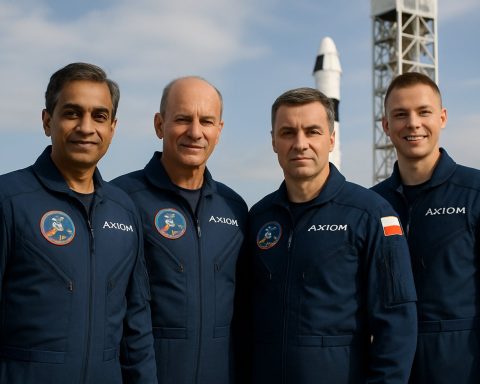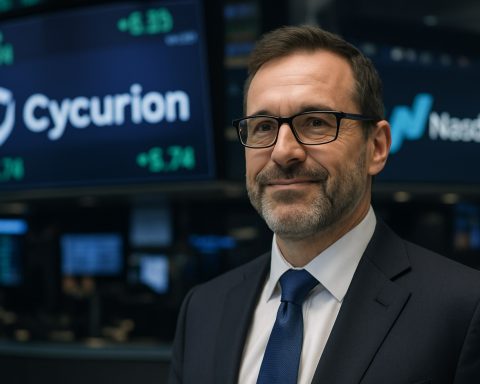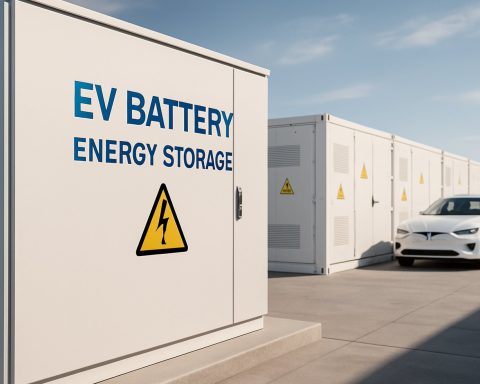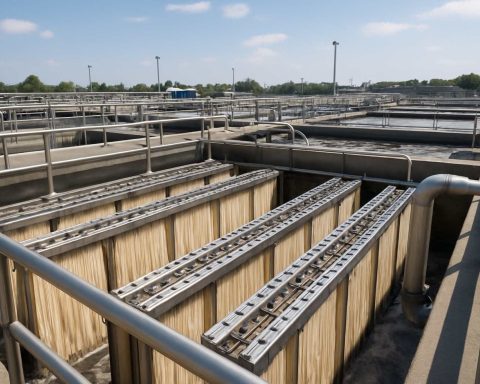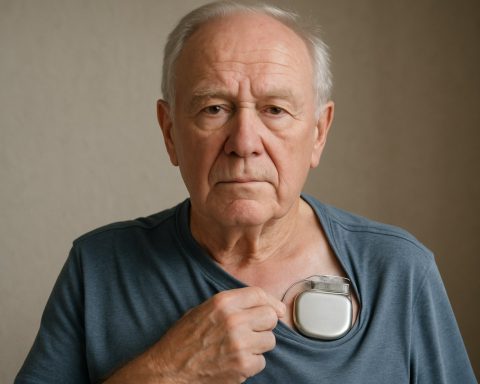- An explosion occurred near the Chernobyl nuclear site, causing international concern.
- The fire was quickly extinguished, and radiation levels remain normal and stable.
- Russia denies responsibility for the incident, highlighting ongoing geopolitical tensions.
- The new Safe Confinement structure at Chernobyl withstood the event but shows signs of conflict impact.
- IAEA experts, led by Rafael Mariano Grossi, emphasize the ongoing risks to nuclear safety.
- Conflict around Ukraine’s nuclear sites, including Zaporizhzhya, increases nuclear instability risks.
- International calls for restraint stress the fragile nature of safety amid ongoing military activities.
A chilling disturbance at the Chernobyl nuclear site sends ripples of concern through an already uneasy world. In the dead of night, an explosion reverberated near the former Soviet nuclear plant, igniting flames that danced menacingly under the watchful eyes of the International Atomic Energy Agency’s field team. Swift response teams extinguished the blaze, their efforts a testament to vigilance in the face of latent danger.
Despite the fiery spectacle, reassuring news trickled in: radiation levels remain normal and stable. The catastrophic meltdown of 1986, when radioactive plumes forced mass evacuations and reorganized lives, still looms over every incident in this land. The new Safe Confinement enclosure, a testament to human resolve, stands battered but unyielded. Its outer shell now bears the bruises of conflict—an unwelcome reminder of persistent threats.
Russia swiftly denies accountability for the attack, while experts from the IAEA, led by Rafael Mariano Grossi, continue their vigil. Grossi underscores the enduring peril to nuclear safety while conflict simmers at the doorstep of history’s most infamous nuclear disaster sites. His voice carries the weight of caution amidst the relentless churn of geopolitical tensions.
Military activity surges near Ukraine’s other volatile sites, like the Zaporizhzhya plant, underscoring a grim truth: the specter of nuclear instability hovers as long as conflict persists. The demand for restraint echoes through international corridors, a call for temperance before the next strike severs a line too fine to draw again. For all the dramatic flares and resounding denials, one fact remains—safety, fragile and precious, teeters, ever reliant on the actions of many amidst the turmoil of war. The vigilance continues.
Unveiling the Shadows: The Ongoing Battle for Safety at Chernobyl and Beyond
How-To Steps & Life Hacks for Ensuring Nuclear Safety
1. Robust Coordination: Establish international rapid response teams specifically trained for nuclear incidents to minimize response time and mitigate damages.
2. Enhanced Monitoring Systems: Deploy state-of-the-art sensors and monitoring systems around nuclear sites to provide real-time data on radiation levels and structural integrity.
3. Regular Drills and Simulations: Conduct regular safety drills simulating various scenarios to prepare emergency response teams and local communities effectively.
4. Information Dissemination: Develop clear communication channels to disseminate accurate information swiftly during incidents to prevent misinformation.
5. Community Engagement: Educate local populations about nuclear safety measures, evacuation procedures, and the importance of adhering to guidelines.
Real-World Use Cases
– Renewable Energy Transition: Some regions near affected areas have turned to renewable energy sources, reducing reliance on potentially hazardous nuclear power while demonstrating effective disaster recovery and environmental rehabilitation.
– Safe Zone Implementation: Establishing perimeters around nuclear sites that serve as buffer zones to prevent unauthorized access and ensure clearer evacuation pathways during crises.
Market Forecasts & Industry Trends
– The demand for nuclear safety technology is anticipated to grow as geopolitical tensions persist, with an emphasis on both protective infrastructure and preventative technology advancements.
– Investments in nuclear plant safety and refurbishment, especially near conflict zones, are predicted to increase, as noted in IAEA reports, to bolster global nuclear power reliance.
Reviews & Comparisons
– Chernobyl vs. Fukushima Daiichi: Comparing the crises, Fukushima’s response benefited from Japan’s prompt evacuation measures and information transparency, whereas Chernobyl’s delayed response exacerbated the disaster.
Controversies & Limitations
– Accountability and Transparency: Persistent issues exist regarding the attribution of responsibility during nuclear incidents, often tangled in political narratives and geopolitical conflicts.
– Technological Gaps: Despite advancements, many older nuclear facilities are struggling with integrating modern safety systems due to infrastructural and financial constraints.
Features, Specs & Pricing
– The New Safe Confinement at Chernobyl is a marvel of engineering, designed to last at least 100 years, featuring advanced steel and concrete infrastructure priced at approximately $1.5 billion.
Security & Sustainability
– Current global security frameworks for nuclear sites are continually reviewed, with IAEA involvement critical in enhancing safety protocols and ensuring sustainable energy practices.
Insights & Predictions
– Expect increasing regulatory frameworks emphasizing nuclear plant safety, along with international pressure for countries to adhere strictly to IAEA safety standards.
Tutorials & Compatibility
– Training programs by the IAEA are available, providing comprehensive tutorials on handling nuclear safety equipment and integrating systems compatible with existing plant infrastructure.
Pros & Cons Overview
Pros:
– Advances in safety engineering reduce the potential for catastrophic failures.
– International cooperation can enhance response strategies and resource allocation.
Cons:
– Political tensions often hinder effective communication and response.
– High costs associated with maintaining and updating safety measures can strain resources.
Actionable Recommendations
1. Stay Informed: Keep abreast of international safety reports and guidelines on nuclear safety from credible sources like IAEA.
2. Advocate for Policy: Support policies that encourage transparency and investment in nuclear safety technology.
3. Community Preparedness: Participate in local workshops or drills related to nuclear safety to ensure you are prepared for any potential incidents.
By adopting best practices and understanding the nuances and challenges associated with nuclear safety, individuals and communities can better prepare for contingencies, contributing to collective safety.



